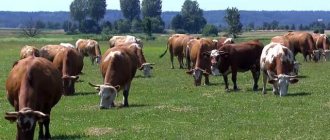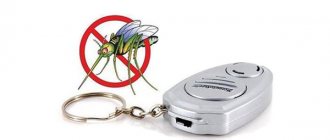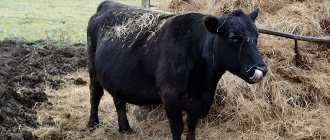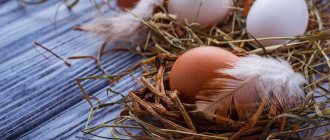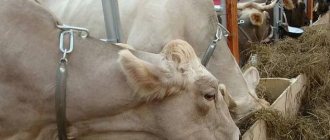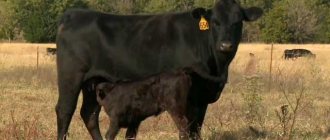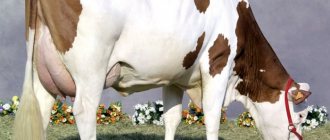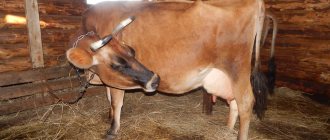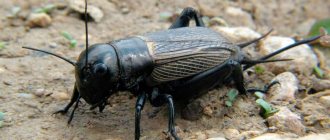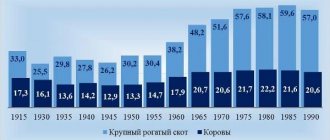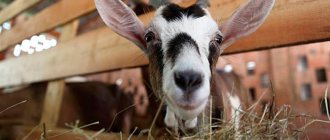How to properly herd cows in a pasture
determine how many heads of livestock can be fed on a hectare of a given pasture during the grazing period.
This question is very important, since with excessive grazing load, often even the most grazing-tolerant plants fall out of the grass stand and pasture lands lose their economic value.
With a high yield of green mass on rain-fed pastures, one animal requires the following area (ha):
- for adult cattle - 0.4...0.5,
- for young cattle - 0.2,
- for adult horses - 0.25...0.3,
- for young horses - 0.12...0.14,
- sheep - 0.07...0.08.
With low grass yields, for example on wormwood, fescue and feather grass-fescue pastures, the required area per head of cattle can increase to 1...2.5 hectares, on solyanka pastures - up to 2...3 hectares.
On semi-desert pastures with low grass yields (on average 0.1...0.5 tons of dry mass per 1 hectare), 3.5...6 hectares are required for one sheep per year.
The productivity of pastures can be determined on test plots, where the grass is mowed at a height of 3...4 cm and then the green mass is weighed.
The daily need for green food for animals of different species is determined according to zootechnical standards adopted on the farm.
You can adhere to the following average norms (kg of green feed per day per animal): for cows, depending on milk yield - 40...75, for young cattle over one year old - 30...40, for young cattle up to one year old - 15...25, for sheep - 6...8 (in steppe regions due to dryness of feed - 3...6), for lambs - 2...3, horses - 30...40.
Knowing the yield of green mass of a pasture, the daily need of an animal for green fodder and the duration of the grazing period, it is possible to determine the capacity of the pasture.
For example, the yield of green mass is 27 tons per 1 ha, the duration of the grazing period is 150 days. One cow requires 60 kg of green feed per day, therefore, for the entire pasture period, 60⋅150 = 9000 kg (9 tons) will be required, and the load per 1 hectare of pasture is 3 cows.
Thus, one cow will require 0.33 hectares of pasture during the grazing season. When calculating pasture areas, it is advisable to increase this area by 15...20% in case of a decrease in grass yield due to unfavorable weather. In the experiments of the Department of Grassland Management of the Moscow Agricultural Academy in the Yaroslavl region, it was revealed that the productivity and condition of natural pastures were the best for 12 years if such loads of sheep were provided in which the grazing of the mass of eaten grass species was 80...90%.
With greater load, pastures degraded, the botanical composition of the grass stand deteriorated, and the content of plantain, silverweed, bird's-eye buckwheat, and poisonous forbs increased in it.
With very low load and no grazing use, the lands were overgrown with shrubs and poisonous herbs.
Professor V.A. Tuldyukov has developed a technology in which pastures, especially irrigated ones, begin to be used in the year of sowing. At the same time, annual accompanying crops and perennial grasses are sown. The first grazing begins when the accompanying crop reaches the phase of entering the tube (budding).
In the second grazing, these crops give 30...35% of the yield. In subsequent cycles, the yield is formed due to perennial grasses.
On semi-shrub and shrub pastures of arid and subarid zones, animals should graze no more than 2/3 of the annual growth of shoots.
If you find an error, please select a piece of text and press Ctrl+Enter.
The grazing period provides dairy cattle with high milk yields, and the cost of producing a unit of output is much lower than the stall period.
The quality of milk improves in the summer. Experts believe that the grazing period helps to extend the productive life of dairy cows. However, nothing comes easy. It is necessary to transfer animals to pasture not in one day, but gradually. They are being prepared for this. (See the article “Preparing animals for grazing”)
A month before being put out to pasture and during transfer, cows are given 50-60 kg of succulent feed. This helps them better prepare for eating grass in the pasture.
This diet is maintained for 10-15 days while grazing on pasture, gradually reducing it. At the same time, the duration of grazing is increased by 2-3 hours.
Experts say that it is better to turn cattle out to pasture in the afternoon. The next 3 days - 4-6 hours, then 4-5 days and 8-10 hours. By maintaining this scheme, it is ensured that milk productivity does not fall, but increases with each day of grazing.
Where possible, the best pastures should be allocated for cows.
The shepherd needs to know that some herbs impair the taste of milk. Eating, say, wormwood, rapeseed, and onions by cows gives the milk an unpleasant smell and taste.
At the beginning of spring, the grass stand has high humidity, reaching 80-85%.
Grass does not have enough fiber and protein. According to scientists, green food in spring contains 25% less dry matter than winter food, 2 times less fiber, and 10 times less carotene. Taking this into account, in the spring (and some experts suggest the entire grazing period), an additional 2-3 kg of hay or 5-6 kg of haylage is added to the cows’ diet. If this is not possible, give straw and dried green grass.
During summer grazing, cows eat grass in different ways. Young grass is more nutritious and 90% of it is eaten.
During the flowering period, up to 50% of the grass is eaten. At heading - about 75%, after heading the grass palatability decreases to 20-10%.
To give or not to give cows fodder ? Most experts say that it is better to give cows with a milk yield of up to 20 kg per day 100-150 g of formula feed, and with higher milk yields - 200 - 250 g (per 1 kg of milk).
When giving formula feed, it is necessary to take into account that with large doses of forage, the palatability of grass decreases. This cannot be allowed. During the grazing period, cows need to be given mineral supplements.
According to scientific data, grass lacks phosphorus, sodium, copper, and cobalt. Feeding during the grazing period is carried out with mineral briquettes. They are fed in separate wooden boxes, protected from the rain. Animals, in addition to plain water, are given salted water.
The water supply must be protected from frost
A big difficulty during frosts is a guaranteed water supply. But here, in most cases, a good solution is to insulate the drinking system or heated drinking bowl. Another option is a constantly working well. For ball drinkers, there is a great danger that the ball on the rim of the drinker may freeze. The water inside will not freeze. In such cases, as a rule, it is enough to knock on the ball.
The pipeline itself poses more difficulties than the desoldering system. But if it is insulated, heated, or constant water circulation is maintained in it, there will be no problems with freezing. The water supply should, if possible, be laid at a depth where the soil does not freeze.
Cows in the pasture - first time grazing cows in spring
Practice shows: where cows are not given table salt, productivity decreases.
Lick salt cannot fully satisfy the sodium needs of animals.
Adding salt to the summer diet increases the amount of milk by 10.3% and the fat content by 0.8%. Moreover, the cost of feed units and digestible protein per 1 kg of milk is reduced by 8.5%. Other macro- and microelements need to be included in the diet.
The size of the herd is of no small importance when keeping cows on pasture.
The herd should be no more than 100-120 cows on open pastures and 50-60 cows when grazing in the forest. In a large herd, it is more difficult for a shepherd to monitor the feeding of animals and to protect them from bruises, wounds and other traumatic injuries during grazing.
The summer camp should be located no further than 1.5-2 km from the pasture. In this case, the cows do not waste energy on idle runs and do not reduce productivity. Water is of great importance in increasing the productivity of cows during the grazing period.
Cows need to be watered at least 3 times, and in hot weather 4-5 times a day. A watering hole for cows should be located no further than 1 - 1.5 km from the pasture. During the digestion process, a cow secretes 50-60 liters of saliva during the day.
A cow produces milk from 10 to 20 liters. To compensate for fluid loss in the body, cows need 70-80 liters of water per day. Only this amount ensures normal health and high productivity.
The literature provides data: when an animal loses 10% of water, it becomes weak, appetite decreases, and a disorder of the nervous system and gastrointestinal tract begins. If the animal's body has lost more than 20% of water, this leads to death. It has been established that with general starvation, but with water provided, animals live 30-40 days. When deprived of water, animals die within 4-8 days. It has also been established that uninterrupted watering of cows increases milk yield by 6-10%.
On pasture, special attention should be paid to the condition of the udder.
In the summer, teats tend to become chapped, so milkmaids should wipe the udder and teats dry after each milking and lightly lubricate them with Vaseline. Before the next milking, the udder is washed.
During grazing of cows, it is recommended to systematically clean and wash contaminated areas of the skin.
Activities for a sanitary day should be outlined and carried out weekly.
In hot weather, the herd cannot be grazed for a long time, since when the animal’s body overheats, milk production decreases. Therefore, the grazing schedule changes with an emphasis on morning and evening hours. During the flight of gadflies, animals must be protected from their bites. By paying serious attention to feeding and caring for animals during the grazing period, you can achieve the highest performance in dairy farming.
How the goblin helped the shepherds, and what they gave him for it
Previously, it was believed that shepherds could enter into an agreement with the goblin. To please him, they could promise never to pick wild berries and never shake hands with anyone. The goblin, in turn, climbed onto the shepherd's staff or whip, and stayed there the entire time the shepherd worked, helping in every possible way.
The agreement with the forest spirit should have been concluded during the period of Yegoryev Day - Intercession. Here things could not be done without annual gifts - the shepherd gave the goblin four chicken eggs, always from a black hen, in the second year - footcloths made of cloth, and in the third - the fattest cow. The poor animal was given over to be torn to pieces by wolves and bears. And if the cow disappeared, there is an excuse: the shepherd gave it to the goblin so that he would protect the herd from wild animals.
During the year, the goblin had to be presented with small gifts in order to gain his favor, for example, bread and butter. When getting ready for work, the shepherd took with him special items - a piece of birch bark, a ball of wax or flour with a scrap of cow hair. Some shepherds trusted the goblin so much that they simply drove the cows to pasture and then calmly went home.
How to herd cows correctly
The grazing period for keeping animals has arrived, the most favorable period for obtaining relatively cheap and high-quality milk. It is very important to transfer animals from winter stabling to grazing in accordance with all the rules. This is done gradually, over 7-8 days.
In the morning, before being driven out to pasture, and upon returning home, the cows are fed with hay in order to enrich the diet with fiber, which is not enough in pasture grass during this period. Otherwise, the digestive processes in the body will be disrupted, the formation of acetic acid in the rumen will decrease, which will lead to a sharp decrease in the fat content of milk.
If in winter your cow received little succulent feed, then extend the transition period to 10-14 days, since animals that received only dry feed get used to grass more slowly.
In the first days, cows are driven out to pasture only after the dew has disappeared and grazed for 2-3 hours; by the end of the transition period, the duration of grazing is increased to 10-12 hours a day.
Spring grazing should not begin too early, when the pastures are still damp and sticky, otherwise the cattle will trample the roots of perennial grasses.
However, it is also not necessary to delay the exit of livestock to pasture. You need to start grazing at a time when the young grass has not yet grown enough for the cows to eat to their heart's content. In such cases, they overeat on young grass and develop so-called “grass” diarrhea, which lasts 1-2 weeks.
In this case, milk and butter have an unpleasant taste and smell, and the cheese swells and cracks.
Young grass is high in protein, but low in carbohydrates, fiber, macro- and microelements.
That is why during the transition period it is necessary to introduce concentrates and minerals into the diet of cows. Ground cereal grains, enriched with the missing minerals, are the most suitable feeding.
On the pasture, special feeders should always contain table salt (a source of sodium and chlorine), as well as phosphorus-calcium fertilizer. According to the results of research by scientists of the Scientific and Practical Center of the National Academy of Sciences for Animal Husbandry, mineral supplements are best fed in the form of polysalts.
The following composition is recommended for cows: 60% table salt and 40% feed phosphate. In 100 kg of such a mixture, 20 g of cobalt chloride, 75 g of copper sulfate, 35 g of zinc sulfate, 75 g of manganese sulfate and 2.5 g of potassium iodide are added.
Since livestock more readily eats wet grass covered with dew, animals need to be released to pasture early. Grazing on dew is prohibited only during frosts (cows may have miscarriages), and also in a clover field.
Clover eaten on an empty stomach causes swelling of the rumen - tympany. In the morning, cattle are grazed on the worst pastures; they are released into the best areas in the afternoon. During the hottest season, approximately from May 25 to August 15, cows are grazed from 4 to 9 am and from 4-5 to 10 pm. At noon, the animals rest in the stables.
Keep in mind that cows do not eat well both too young grass, up to 15 cm high, and overgrown grass, over 30 cm high.
It has been noticed that if white clover grows in a meadow along with cereal grasses, then the food consumption increases sharply. But red clover in pasture grass is not very good, its quality quickly decreases over time. Cows consume 20% less flowering clovers than in the budding phase.
It is better to graze the grass stand during earing of grass. In any case, we must strive to ensure that the cow receives at least 50 kg of pasture feed per day. This can be achieved if, with good grass cover, the driven grazing method is used.
Requirements for a shepherd
It would seem that it could be easier than herding cows. You lie in the shade and move a blade of grass in your mouth. And the cows in the meadow at this time are peacefully nibbling the grass. But not everything is as simple as we would like.
It was not for nothing that the work of a shepherd was held in high esteem in the old days. He did not just accompany the herd to the grazing place and back. This person should have known the herbs that could be eaten by animals and which were contraindicated. He had the veterinary skills to help livestock in the field when needed.
Among other things, the shepherd had to be able to ride a horse. Now these requirements remain relevant.
While the cows are grazing in the meadow, the shepherd must supervise their feeding. We must ensure that they have something to drink and eliminate the possibility of poisoning from pesticides that are used on plants. It is also necessary to monitor the health status of animals and quickly respond to its changes.
How to herd cows correctly
When the grass in one pen is eaten, the animals are moved to a new one. All pens should be used in turn over a period of 4-5 weeks. By this time, in the first paddocks, the grass will have grown again by 15-17 cm, and they again begin to be pitted one by one.
With corral grazing, you can feed more cows on the same pasture area and increase their productivity by 30-35%.
Well, how should you treat cows grazing at night?
Special studies have established that in a good meadow with round-the-clock grazing, cows eat grass only 7-8 hours a day, they spend about four hours on movement not related to collecting food, and the rest of the time they rest.
At the same time, active grazing occurs mainly early in the morning and in the evening, and after sunset the animals prefer to rest. At the same time, with round-the-clock grazing, a significant part of the grass is trampled and contaminated with animal excrement. The conclusion is this: with good grass cover, it is enough to graze cows 9-10 hours a day, preferably in 2 doses: 4-5 hours after morning milking and 5-6 hours in the afternoon.
The most nutritious grass on pastures occurs in May and June.
From July, the grass begins to coarse, it contains more fiber, less carbohydrates and protein. Therefore, cows with high milk yields, starting from the end of July, need to be fed with concentrates, and if there is a lack of grass on the pasture, green mass should be delivered to the stalls. In areas with poor pastures, highly productive animals must be fed with concentrates throughout the summer.
Swamp and forest grass contains few nutrients even in early summer.
In autumn, with the onset of frost, cows are given hay in the morning and released to pasture later.
At the end of September or beginning of October, they begin to distribute dry food twice a day, the duration of grazing is reduced, and with the onset of frost, the cows are completely transferred to the winter diet.
Give the animals plenty of good quality water to drink 2-3 times a day.
Good water should be clear, colorless, odorless, contain few organic and earthy impurities, and have a pleasant, refreshing taste. Water from rivers, streams and lakes meets these requirements to the greatest extent. Standing water from ponds and swamps is considered the most unhealthy.
It contains a lot of rotting organic matter, it is cloudy, has a putrid odor and an unpleasant taste. It is especially harmful to give cows such water during the hot summer months.
Don’t forget about timely insemination of cows. This must be done no later than 65 days after calving. It should be remembered that the highest fertility of cows is observed in the second half of the hunt, closer to its end.
The optimal time for insemination of an animal is the period from 12 to 18 hours after the start of the hunt, i.e. the first appearance of the immobility reflex. Hunting in cows is determined (shepherds do this in the pasture) by their unusual behavior. Such animals are restless, jump on other cows and allow them to jump on themselves (immobility reflex), lose their appetite and often reduce milk yield.
Animals that showed heat in the first half of the day are inseminated in the evening, and those that came into heat in the afternoon (identified in the evening) are inseminated in the morning. It has been noticed that in the summer most cows start to go into heat early in the morning or in the first half of the day. To identify it, you need to carefully monitor the behavior of animals at home and in the pasture.
How to get the most out of your rangeland.
First of all, which is within the power of every owner, it is necessary to carry out their surface improvement: clear the area of bushes and woody growth, destroy hummocks, molehills, remove stones, clear debris, drain stagnant surface water through hollows.
In cleared areas and meadows with thinned grass, grasses are sown. The following grass mixtures are good for pasture: from early grasses - meadow bluegrass, meadow foxtail, hedgehog grass, white clover; from the middle ones - meadow fescue; of the later ones are timothy, awnless brome and alfalfa.
In conclusion, I would like to remind you that the efficiency of using cows throughout the year largely depends on the results of work during the grazing period.
During this time, the fatness of the cows must be brought to average standards. In this state, cows are able to produce the greatest amount of milk, healthy offspring and will survive the winter well.
A.R. Bychkov.
Read other articles on this topic here.
Nuances to consider with any grazing method
It should be remembered that very tall plants are difficult for animals to eat. The cow most readily grazes grass about 15 cm high.
Some farms prefer to keep cows on pasture around the clock, the features of which can be found in the article: “On pasture keeping of cattle.”
The shepherd must always remember that cows often wander off in the field, so he must ensure that the animals do not stray from the herd or end up in a ravine or in fields with agricultural crops.
In addition, the shepherd has to take into account how the cow behaves and what its character is. Some individuals are distinguished by their calm and peaceful disposition, while some, on the contrary, are very obstinate and can kick and butt. Such people are either tied up or their legs are tied with rope.
There are certain nuances regarding how to properly herd a cow and its offspring. The calf should be grazed next to its mother. Do not allow other animals to approach them. And the shepherd himself should stay away from them.
These demands are caused by the aggressive behavior of the cow, protecting and preserving her calf.
Please like if you found the information you need here.
Your comments will help make the site better.
Feeding and keeping cows during the grazing period
Features of feeding and keeping cows during the grazing period
During the grazing period, cows produce more than half of the total annual milk yield. The best pastures are considered artificial perennial and annual seeded grasses, pastures with a high content of leguminous grasses (alfalfa, clover, vetch, china) or cereals such as ryegrass, meadow fescue, foxtail, wheatgrass, and bluegrass.
Depending on productivity, live weight and physiological state, the need of animals for nutrients changes.
Feeding rates are also recommended in accordance with this. In the summer months, the diet is based on fresh grass and concentrates (ground or flattened grain). The chemical composition and nutritional value of green forage change dramatically depending on the botanical composition of the grass stand, the phase of the growing season and the timing of grazing, the type of soil and the amount of fertilizer, and the technology of feeding grass.
As part of fresh feed, cows can consume up to 11 kg of dry matter per head per day, which, without feeding with concentrates, ensures a milk yield of 10-11 kg.
When given plenty of green feed and concentrated feed at the rate of 300 g per 1 kg of milk, cows completely cover their energy needs.
However, the dry matter of young grass does not contain enough sugar and fiber, and aged grass contains an increased amount of crude fiber, which reduces its edibility.
Therefore, when using a green conveyor, it is necessary to ensure that the fiber content in the cow’s diet is 18-20%.
Cereal grass obtained from fertilized areas, like legume green mass, is rich in crude protein, characterized by high (60-70%) solubility and digestibility of the protein fraction.
In this case, it is recommended to feed concentrates with a reduced protein content (barley). The need for additional inclusion of protein supplements arises only when grazing livestock on poor pastures and on old grass.
When feeding green feed, especially during grazing, the need for vitamins is fully satisfied and when the animals are turned to pasture, the signs of hypovitaminosis disappear.
When keeping livestock indoors in the summer, animals should enjoy 4-5 hours of walks.
In green food, the level of mineral substances depends not only on the botanical composition and phase of the growing season, but also on their reserves in the soil.
According to test results, plant feed obtained in the Moscow region does not contain enough cobalt, iodine, zinc, copper, sodium and phosphorus. Young grass lacks magnesium and always has an excess of potassium; the harmful effects of excessive potassium intake are reduced by introducing increased doses of sodium salts into the diet. Providing a potassium-sodium ratio of 3-5:1 is an indispensable condition for obtaining high milk yields.
To balance summer diets, a comprehensive universal feeding is recommended.
Organization of feeding livestock during the grazing period
To prepare livestock for summer housing, the following activities must be carried out.
1. Before pasture, it is necessary to conduct a commission clinical examination of the entire livestock and complete all planned preventive and diagnostic treatments of livestock.
2. Trim and trim the hooves, cutting off the tops of the horns of aggressive animals.
Organize treatment of sick animals.
3. In order to compensate for the lack of macro- and microelements in the body, all livestock should be fed complex mineral supplements at the rate of 30 g per 100 kg of live weight 2 weeks before grazing.
4. Form herds according to production and age and gender characteristics. The number of livestock in a herd, depending on the type of pasture, should be from 100 to 200 heads.
5. Cows are transferred to pasture feeding gradually, over 1-2 weeks, depending on the nature of winter feeding.
In the first days, they are not grazed for long (2-3 hours) and fed before being put out to pasture, otherwise they begin to greedily eat the grass, which can result in tympany or indigestion. In subsequent days, the duration of grazing is gradually increased, and if the cow is full, then all feed is excluded from the diet, leaving only concentrates.
When choosing concentrates, you need to keep in mind that young grass is rich in protein. Therefore, they should consist mainly of cereal ingredients.
6. When grazing cattle in the first ten days, they need to be given hay (straw) 2-3 kg or haylage - 5-6 kg and table salt up to 120 g per cow.
This feeding prevents indigestion and a decrease in the fat content of milk.
To prepare pastures and forage lands for use in the summer, the following activities should be carried out.
1. After the snow melts and the soil dries, pasture lands must be cleared of debris, bones, wire, boards, poisonous plants, metal objects, etc.
d.
2. Repair fences, crossing bridges, two weeks before the start of animal grazing, fertilize pastures and areas for growing green mass with mineral fertilizers, and repair the irrigation system. Carefully remove residual mineral fertilizers from the surface of meadows and livestock runs.
3. Carry out an inventory of pastures and areas of the green conveyor for feeding.
Draw up a plan for changing pasture paddocks and mowing areas of the green conveyor, clarify the feed balance for the summer, determine the timing and dose of fertilizer for the summer.
Before the start of the grazing period, livestock buildings and farmyards must be cleared of manure, garbage, feed residues, and winter insulation materials must be removed; clean the windows from dust, carry out routine repairs of the roof, doors, floors, feeders, disinfect the barns, calf barns, and maternity ward.
Electrical equipment and fire protection equipment must be brought into compliance with the requirements. It is also necessary to clean the runs from the livestock yards to the pasture, fence off the camps, repair artificial insemination points, and prepare access to the reservoir. If necessary, make feeders under a canopy to distribute green mass, concentrated feed and minerals.
During the grazing period, as well as during the stable period, feeding of cows should be rationed.
This means that high-yielding cows, as well as those cows that begin to reduce their milk yield when moving to pasture, should receive additional feeding. Feeding usually consists of green and concentrated feed. For feeding, only freshly cut grass should be given.
When grazing cows on cultivated and natural pastures, it is necessary to take into account the unequal rate of regrowth of green mass during the summer period.
The green mass grows most intensively in the second half of May and the first half of June. During this period, the cows' need for green mass when grazing on pastures is almost completely satisfied. Green fertilizer is given in feeders in the amount of 10-15 kg per head per day. Then, with a decrease in the intensity of regrowth of green mass, the daily supply of green fertilizer is increased accordingly. It is given twice a day - at lunch and in the evening. To ensure an uninterrupted supply of green mass during the summer season, a green conveyor of perennial and annual grasses of different sowing dates is organized.
During grazing, animals should receive table salt (40-50 g per head), which is best given in the form of a lick.
In summer, a well-established watering hole is of great importance.
Cows need to be driven to water 3 times, and in hot weather - 4 times a day. If cattle drink water from the river, then a special fence must be made at the watering place to prevent cows from entering the river and polluting the water.
Where there is no natural watering hole, livestock in the pasture must be watered from troughs.
In the fall, the transfer of cows from pasture to stall housing should also be carried out gradually, but not stretching it out for a long time, as this negatively affects their productivity.
Feeding green conveyor crops to livestock begins in the last ten days of May and ends in early October, observing the following sequence:
1) green mass of winter rye;
2) green mass of winter wheat;
3) perennial herbs;
4) green mass of vetch or pea-oat mash, sown in 3-4 periods at intervals of 10 days;
5) remnants of perennial grasses;
6) green mass of corn;
7) green mass from stubble crops of corn and turnip;
 turnips with tops (spring sowing time);
turnips with tops (spring sowing time);
9) tops of root crops.
The use of fodder cabbage in the conveyor makes it possible to feed cows with green feed in November and December.
Systems and methods of using pastures and sown grasses for green fodder.
Cow keeping regime
Three systems are used to provide cows with green feed in the summer: grazing on natural and cultivated pastures; delivery of mowed fresh green mass to feeders during stall keeping; grazing in combination with feeding with green mass in feeders.
In the summer, regardless of feeding technology, livestock must be provided with drinking water from both natural and artificial water supply sources.
